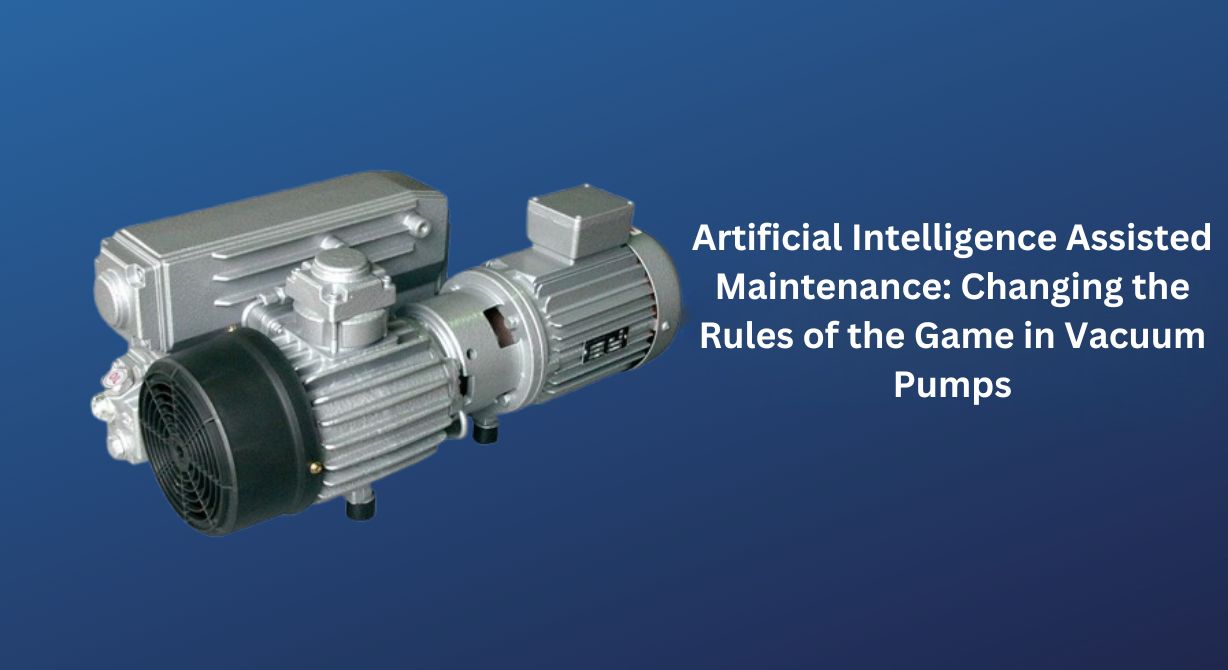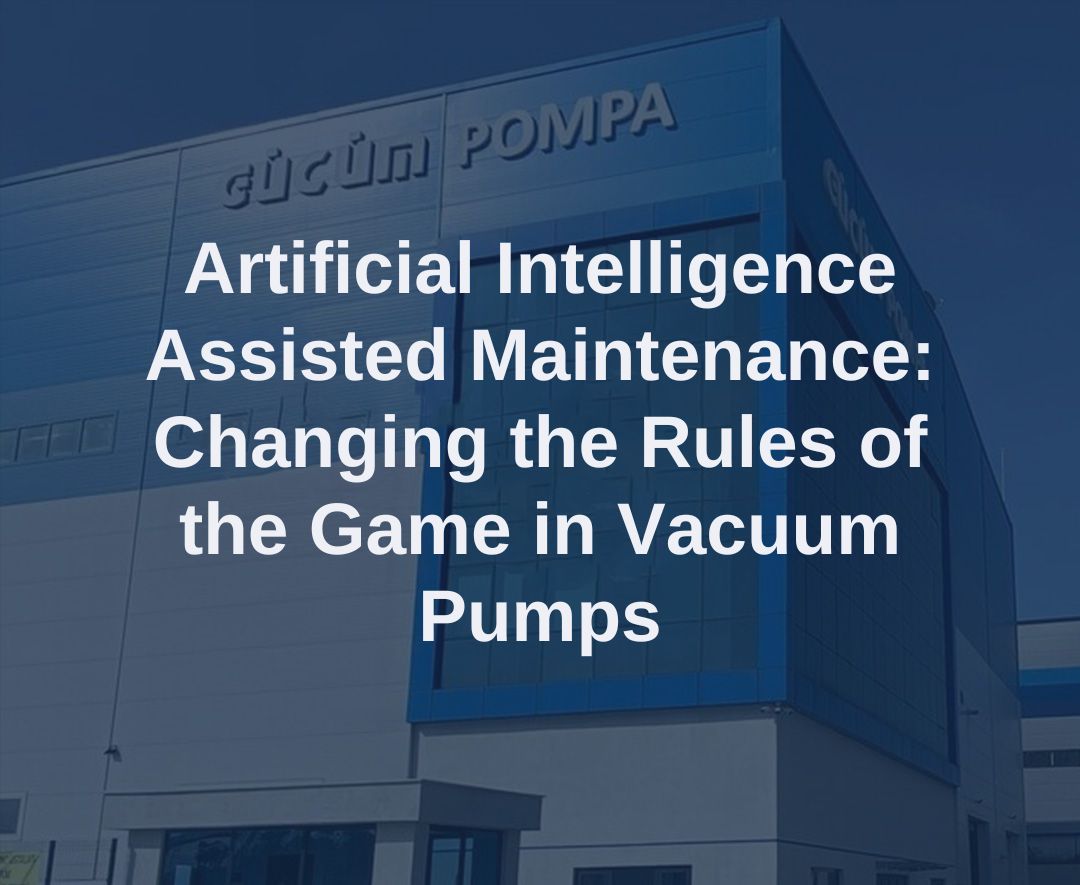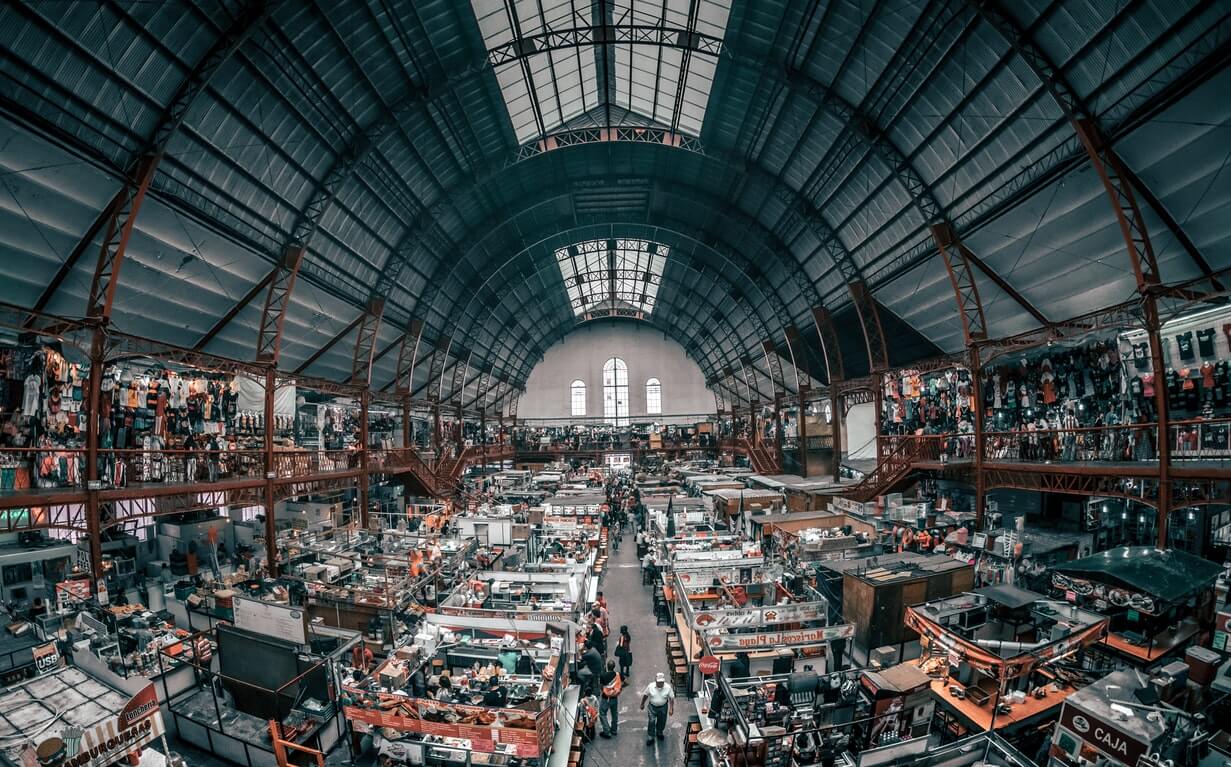Artificial Intelligence Assisted Maintenance in Vacuum Pumps
Table of Contents
- Why Is AI-Supported Maintenance the Choice of the Future for Vacuum Pumps?
- How Does AI Change the Maintenance Processes of Vacuum Pumps?
- How Is AI Used to Reduce the Risk of Failure in Vacuum Pumps?
- Effective Maintenance Strategies with AI in Industrial Vacuum Pumps
- Traditional Maintenance vs. AI-Supported Maintenance: Which Is More Advantageous for Vacuum Pumps?
- Human Intervention and AI: A New Era in Vacuum Pump Maintenance
Why Is AI-Supported Maintenance the Choice of the Future for Vacuum Pumps?
Maintenance processes in vacuum pumps are a critical factor directly affecting industrial efficiency. While traditional maintenance methods are limited in predicting failures beforehand, AI-supported systems are revolutionizing this field. AI-supported maintenance analyzes sensor data to detect potential issues in pumps at an early stage, thus preventing unexpected stoppages.
One of the most important advantages of this technology is optimizing maintenance durations and reducing costs. Failures in vacuum pumps in industrial facilities can cause significant production losses, whereas AI algorithms monitor the pump’s operating conditions in real time and optimally schedule interventions. This both extends equipment lifespan and improves energy efficiency.
Smart maintenance solutions not only detect faults but also prioritize maintenance schedules and optimize resource usage. Thanks to Industry 4.0 and Internet of Things (IoT) integrations, vacuum pump performance is continuously monitored, enabling immediate intervention at any deviation. This approach also increases workforce productivity in facilities.
With data-driven decision-making, AI-supported vacuum pump maintenance optimizes maintenance schedules using predictive analytics and prevents unnecessary interventions. Additionally, these systems detect anomalies in energy consumption, contributing to reducing environmental impact.
How Does AI Change the Maintenance Processes of Vacuum Pumps?
AI creates a fundamental transformation in the maintenance processes of vacuum pumps. While traditional methods mostly rely on planned or post-failure interventions, AI-supported maintenance systems analyze real-time equipment condition and enable predictive maintenance. This allows possible failures to be detected early and production losses to be prevented.
The use of vacuum pump technologies with AI not only enables early fault detection but also optimizes maintenance processes to reduce unnecessary costs. Data from sensors is processed with machine learning algorithms to immediately report performance drops, vibration changes, and temperature anomalies in the pump.
With these advancements, the lifespan of vacuum pumps used in facilities is extended, and maintenance planning becomes much more efficient. Thanks to IoT integration, pumps can be monitored remotely, reducing on-site time and shortening maintenance teams’ intervention duration. These systems also offer advantages in energy efficiency by minimizing unnecessary energy consumption.
AI-based maintenance ensures continuity in industrial operations while establishing new standards in cost and resource management. Businesses gain a competitive edge by using this technology, while vacuum pump maintenance minimizes human errors and achieves maximum performance.
How Is AI Used to Reduce the Risk of Failure in Vacuum Pumps?
AI is playing an increasingly critical role in reducing failure risks in vacuum pumps. Data collected from sensors is continuously analyzed with machine learning algorithms to instantly detect any abnormal operating conditions. This early warning system prevents potential failures.
Parameters affecting vacuum pump performance such as vibration, temperature, and pressure are continuously monitored with AI-based analysis. Thus, any anomaly is detected before human intervention and reported to maintenance teams. This method not only reduces failure risk but also helps lower maintenance costs.
AI systems integrated with IoT technologies enable real-time condition monitoring of vacuum pumps. This increases remote monitoring and intervention possibilities while minimizing production process downtime risks. Furthermore, data-driven predictive maintenance strategies prevent unnecessary downtime.
Failures in vacuum pumps can cause significant production losses in industrial facilities. Therefore, adopting AI-supported maintenance systems both increases operational efficiency and contributes to business sustainability. These technologies allow proactive risk management and optimize pump operating time and performance.

Effective Maintenance Strategies with AI in Industrial Vacuum Pumps
AI is completely transforming maintenance processes in industrial vacuum pumps. Unlike traditional maintenance methods, data analytics and machine learning algorithms monitor pump performance in real time to detect potential faults early. This reduces unnecessary downtime and optimizes maintenance costs.
Industrial vacuum pumps equipped with AI-based maintenance systems focus on improving pump efficiency. Critical parameters such as vibration, temperature, and pressure are continuously tracked, enabling early detection of anomalies. This not only reduces failure risk but also extends equipment lifespan.
IoT-enabled sensors integrated with AI systems provide remote monitoring and management advantages. Operators receive instant status updates on pumps and create predictive maintenance plans to maximize operational efficiency. These technologies minimize downtime in industrial facilities.
AI-supported maintenance strategies reduce operating costs and create a sustainable, reliable working environment in industrial vacuum pumps. This innovative approach ensures uninterrupted production processes and meets modern industry needs.
Traditional Maintenance vs. AI-Supported Maintenance: Which Is More Advantageous for Vacuum Pumps?
Traditional maintenance methods for vacuum pumps generally consist of periodic inspections and routine replacements. This approach may leave equipment unprepared for sudden failures causing downtime. Moreover, excessive maintenance leads to unnecessary costs, while skipped maintenance can cause serious equipment damage. Traditional methods rely on historical data and are inadequate for real-time condition monitoring.
AI-supported maintenance analyzes real-time data from sensors to predict pump performance and possible failures in advance. Thus, operational continuity of vacuum pumps increases while maintenance costs decrease. Predictive maintenance systems ensure interventions only when necessary, eliminating unnecessary downtime and improving efficiency.
The main difference between traditional and AI-supported maintenance lies in data usage and intervention timing. While traditional methods depend on past experience, AI systems enable proactive decisions with real-time data analysis. This provides a critical advantage in reducing downtime and extending equipment life in industrial facilities.
Integrating AI-based maintenance technologies is seen as the key to transitioning to a smarter and more sustainable operation model in vacuum pumps. This way, maintenance teams focus on more strategic tasks while machines operate more reliably and effectively.
Human Intervention and AI: A New Era in Vacuum Pump Maintenance
Human intervention has played a critical role in vacuum pump maintenance for many years; experience and intuition were indispensable in fault detection and problem-solving. However, the rise of AI has initiated a new era in maintenance processes. AI-supported systems collect real-time data from sensors, continuously monitor pump performance, and predict possible faults in advance. This offers a proactive approach to vacuum pump maintenance and reduces unexpected downtime.
However, human intervention does not disappear entirely. AI provides complex data analysis and foresight, while maintenance experts interpret this information and make strategic decisions. This collaboration increases the accuracy and effectiveness of maintenance processes. Additionally, as AI systems continuously improve through learning capabilities, human experience remains crucial in optimizing these systems.
In this new era, success in vacuum pump maintenance depends on a balanced integration of AI and human intervention. Investing only in technological infrastructure is not enough; maintenance teams must be trained to use these technologies effectively. Thus, the performance of industrial equipment can be maximized, and a sustainable maintenance culture can be established.


